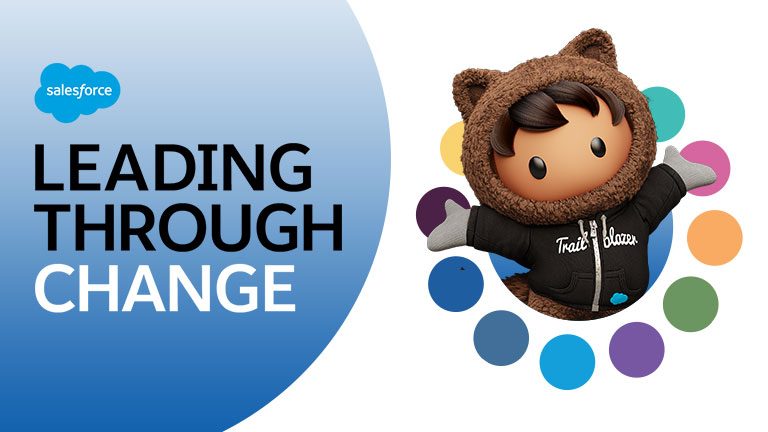“It’s been a journey,” said Harry Moseley, Zoom’s global chief information officer (via Zoom, of course) in a recent conversation with Salesforce’s Chief Adoption Officer Polly Sumner, and that understatement is an odyssey told from a mountaintop. Zoom went from 10 million users to 300 million in just five months. By any metric, their tale of growth and scale is one for the ages. And one that needed a massive technology stack to keep up with the needs of engineering, but also sales and marketing. Zoom is a prime example of a fully-integrated Customer 360 user, with a barrage of seven Salesforce tools working together across the company to help them communicate, connect, and convert.
If you’ve watched Harry D. Moseley in this episode of Leading Through Change, or even if you haven’t, here are some fun facts on him, Zoom, and how they use Salesforce for success.
Facts about Harry D. Moseley
- Moseley is both a National Board Member of The Leukemia & Lymphoma Society and sits on the member board of trustees for the New York City chapter as well.
- More than a year before the pandemic and the swell of mass Zoom adoption, Forbes magazine hung Moseley’s name in its CIO Hall of Fame.
- Despite his many accomplishments, Moseley can’t seem to sit still. He had retired in December, 2017 before being wooed by Zoom just a few months later.
Facts about Zoom
- In December of 2019, Zoom was hosting 10 million daily participants. By April of 2020, that shot up to more than 300 million.
- In January 2020, Zoom was hosting 100 billion annualized meeting minutes. In October, that number rose to more than three trillion.
- The company’s Q2 revenue was $663.5 million, representing a growth rate of 355% year over year. Zoom has north of 3,400 global employees.
Salesforce tools in Zoom’s spotlight
- Products used: Sales Cloud, Field Service Lightning, MuleSoft, Pardot, Tableau, Salesforce Anywhere, and Marketing Cloud
- Sales Cloud is on tap for all salespeople and sales support roles (such as business development representatives, service entitlement teams, success managers, etc.) to help manage business-to-business relationships and opportunities.
- For the enterprise, a built-out Zoom Room simplifies virtual meetings and supports multiple devices from multiple locations, and makes it easier to meet when some attendees share a physical space and others are remote. Field Service Lightning connects with Sales Cloud to build a quote, create a work order, has been an essential asset for Zoom Room implementations for scheduling and dispatching field engineers to install the hardware and software onsite. This integration has helped Zoom to experience substantial productivity gains: Zoom Room implementation time decreased from an hour to about 10 minutes.
- The MuleSoft integration and API platform helps to cross-pollinate data across many systems at Zoom, including Sales Cloud, Pardot, Tableau, and more.
- Pardot uses AI to help Zoom nurture and target B2B customers, and bubble up leads for sales teams. They use B2B Marketing Analytics to track campaign performance, and tailor the frequency and type of content they send out based on the logic Pardot ingests. Pardot also helps Zoom focus on nurturing and targeting free users, encouraging them to engage with the product more and, potentially, help the team make a sale on premium services. Zoom also gains more intelligence around how they segment their audiences with Engagement Studio.
- Tableau is now being rolled out as a business intelligence tool for the sales team, and it will eventually find its way to other groups, including product, marketing, engineering, and recruiting. Zoom is hoping to rely on Tableau to improve its enterprise-wide analytics strategy.
- Communications tool Salesforce Anywhere is currently live with 60 out of their 500 licenses, and Zoom plans to implement the remaining licenses by January, 2021. Zoom hopes this asset will help their sales and service teams stay connected wherever they’re working.
- With such a massive surge, Zoom needed a way to quickly scale their marketing efforts. Marketing Cloud (scheduled to be deployed by Zoom in February of 2021) will help them target the right pro-users and convert them from free to paid accounts. It will also connect data to Sales Cloud, giving the entire organization a single source of truth for every customer’s marketing campaign engagement.
What do unicorn businesses have in common?
Not every company can achieve Zoom’s wild success, but there are a few traits that unicorn businesses – companies valued above $1 billion – share.



This post is the latest installment of Leading Through Change, our video conversation series with industry and thought leaders who use Salesforce products to transform the way they work.





























